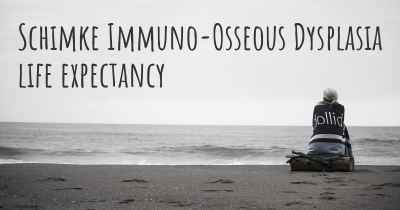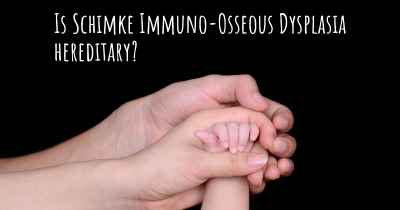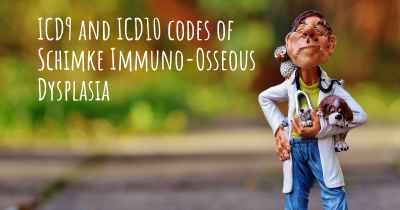What is the history of Schimke Immuno-Osseous Dysplasia?
When was Schimke Immuno-Osseous Dysplasia discovered? What is the story of this discovery? Was it coincidence or not?

Schimke Immuno-Osseous Dysplasia (SIOD) is a rare genetic disorder that affects multiple systems in the body. It was first described in 1971 by Dr. G. Schimke, a German pediatrician, hence the name. SIOD is characterized by a combination of skeletal abnormalities, immune system dysfunction, and kidney disease.
Skeletal Abnormalities: Individuals with SIOD often exhibit short stature, a condition where their height is significantly below average. They may also have a particular bone abnormality called spondyloepiphyseal dysplasia, which affects the growth and development of the spine and long bones. This can lead to skeletal deformities, such as a curved spine (scoliosis) or joint stiffness.
Immune System Dysfunction: SIOD patients have a compromised immune system, making them more susceptible to infections. This is due to a reduced number of white blood cells, which are responsible for fighting off pathogens. As a result, affected individuals may experience recurrent respiratory infections, skin infections, or other types of infections.
Kidney Disease: Another hallmark of SIOD is progressive kidney disease. The kidneys are responsible for filtering waste products from the blood, but in SIOD, the kidneys become damaged over time. This can lead to proteinuria (excessive protein in the urine), which is an early sign of kidney dysfunction. Eventually, kidney failure may occur, requiring dialysis or a kidney transplant.
SIOD is an autosomal recessive disorder, meaning that both parents must carry a mutated gene for their child to be affected. The specific gene associated with SIOD is called SMARCAL1, which provides instructions for producing a protein involved in DNA repair and maintenance. Mutations in this gene disrupt the protein's function, leading to the various symptoms observed in SIOD.
Due to its rarity, the exact prevalence of SIOD is unknown. However, it is estimated to affect fewer than 1 in 1 million individuals worldwide. The disorder primarily occurs in individuals of European descent, but cases have been reported in other populations as well.
Diagnosing SIOD can be challenging, as its symptoms can overlap with other conditions. A combination of clinical evaluation, genetic testing, and imaging studies is typically used to confirm the diagnosis. Genetic counseling is crucial for families with a history of SIOD or those who have a child with the disorder.
Currently, there is no cure for SIOD, and treatment focuses on managing the symptoms and complications. This may involve regular monitoring of kidney function, addressing infections promptly with appropriate antibiotics, and providing supportive care for skeletal abnormalities. In severe cases, kidney transplantation may be necessary.
Research efforts are ongoing to better understand the underlying mechanisms of SIOD and develop potential therapies. Scientists are investigating gene therapy approaches and exploring the role of the SMARCAL1 protein in DNA repair. These advancements hold promise for future treatment options and improved outcomes for individuals with SIOD.
In conclusion, Schimke Immuno-Osseous Dysplasia is a rare genetic disorder characterized by skeletal abnormalities, immune system dysfunction, and kidney disease. It was first described in 1971 and primarily affects individuals of European descent. Diagnosis can be challenging, and treatment focuses on managing symptoms and complications. Ongoing research aims to improve understanding and develop potential therapies for this complex disorder.








